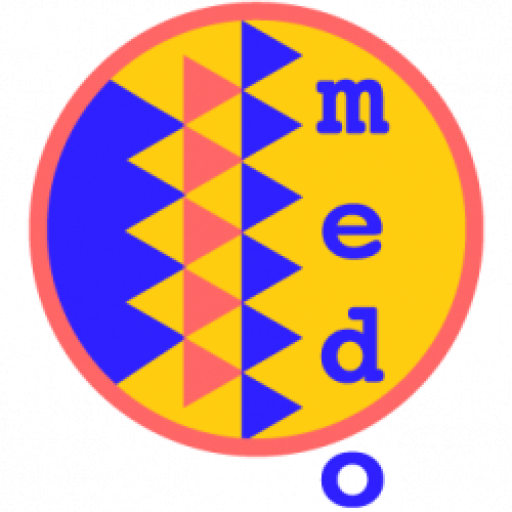OUR MISSION
Medo is a not-for-profit grassroots organization based in the indigenous community of Soloy, located in the Besikó district of the Ngäbe-Buglé Comarca.
Medo aims to promote sustainable development in the Besiko District by connecting volunteers with the community to work with educational, environmental, health, tourism, and cultural programs.
Adán Bejerano founded Medo in 2005 to incite intercultural dialogue between the Comarca people and international volunteers. From its onset, Medo connected community members with volunteers from Canada, the U.S., and Europe. Initial projects addressed health issues in Soloy: including a water lab and the construction of 50 latrines.
The MEDO FOUNDATION (MEDO) was created to support the Besikó, Mironó, and Nole Duima districts and the Comarca via the creation of projects that allow partial or total solutions to the population’s challenges.
According to the Ministry of Social Development report, in conjunction with the United Nations Program, the number of people living in poverty in these districts, reaches 95.4%.
MEDO is focused mainly on education, housing, and basic services. To achieve these objectives, MEDO is well positioned to maintain communication with various civic groups, state institutions, and community members with whom it shares an interest in promoting integrated and sustainable development in the Ngäbe-Buglé Comarca.
MEDO was established by Senator Adán Bejerano Rios, in an effort to serve his people. To further serve his people, Adán has since become the Senator for the 12-2 Circuit as an Independent.
WHAT DOES MEDO MEAN?
The name Medo comes from a Ngäbe legend:
“In Cerro Otoe there is a lagoon that in ancient times was inhabited by a dragon. The dragon had the strength to move the earth and raise the waters in a gigantic wave. The people who passed by there heard his roar and trembled in fear.
Then there came to the region a man named Medo from an island of Bocas del Toro. He established himself in the land. He was wise and possessed supernatural powers, and inspired so much confidence in the people that they trusted him to protect them from harm. With his powers he decided to confront the dragon. And so he made it rain for four days and four nights with intense thunder and lightening that illuminated the dragon’s lake. This frightened away the dragon and freed the people from the lurking evil.”
Medo and the Dragon was created by Out of the Convent at University of California, Berkeley in 2007, as part of Campus MovieFest, the world’s largest student film festival.

PANAMA
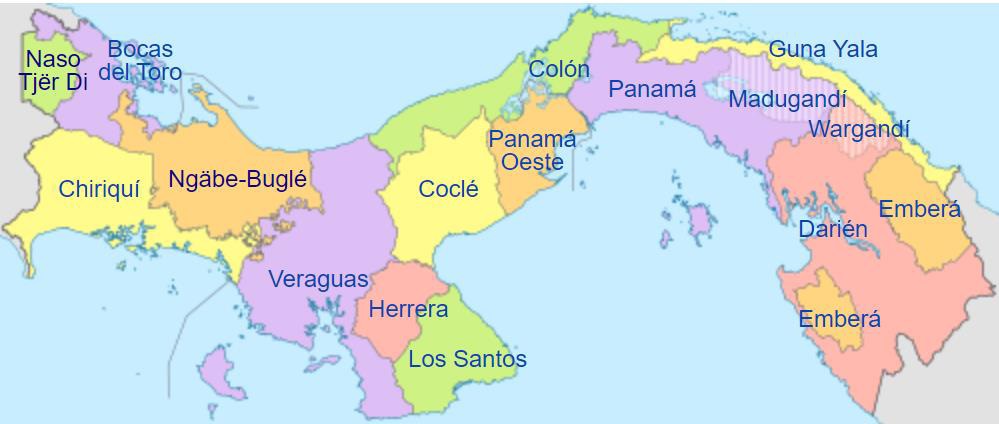
The Republic of Panama is divided into 10 provinces and 6 comarcas. The comarcas are administrative regions with substantial Indigenous population.
The Flag Of Panama
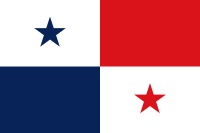 The Flag of the Republic of Panama was put into law in 1949 and reflected the political situation of the time. The blue represents the Conservative Party and the red the Liberal Party. The white stands for peace and purity, the blue star stands for the purity and honesty of the life of the country, and the red star represents the authority and law in the country.
The Flag of the Republic of Panama was put into law in 1949 and reflected the political situation of the time. The blue represents the Conservative Party and the red the Liberal Party. The white stands for peace and purity, the blue star stands for the purity and honesty of the life of the country, and the red star represents the authority and law in the country.
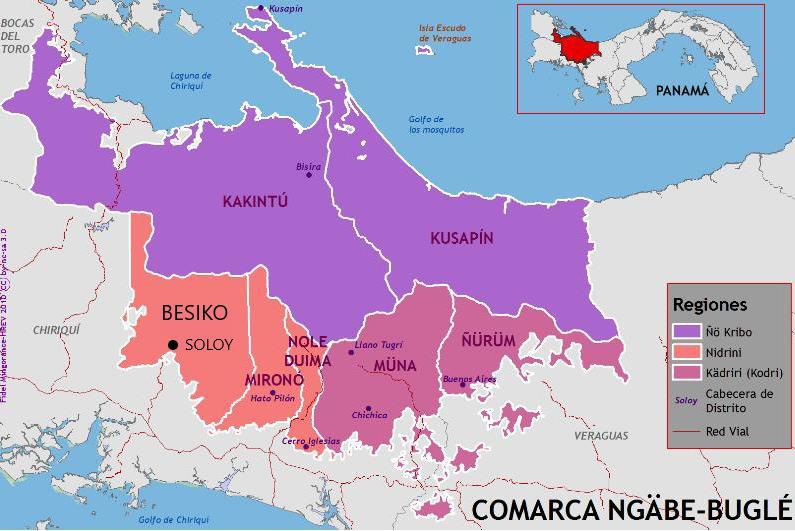
Regions and Districts of Ngäbe-Buglé Comarca
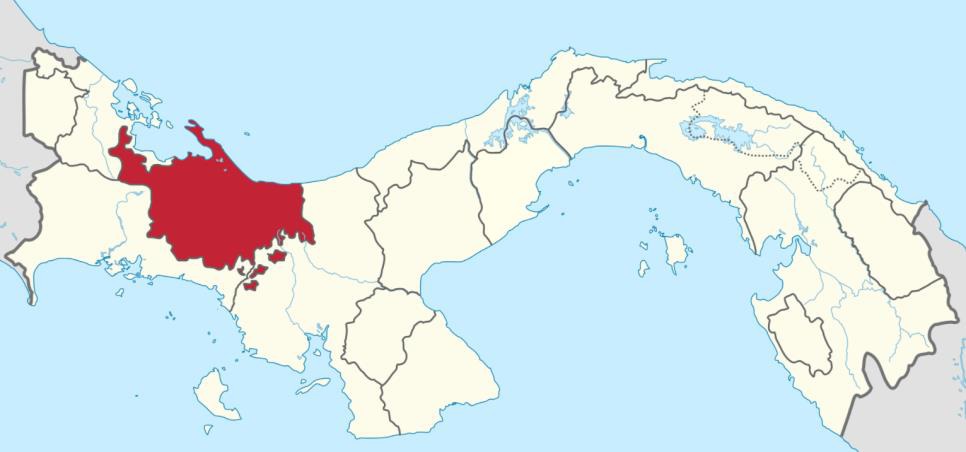
Ngäbe-Buglé Comarca
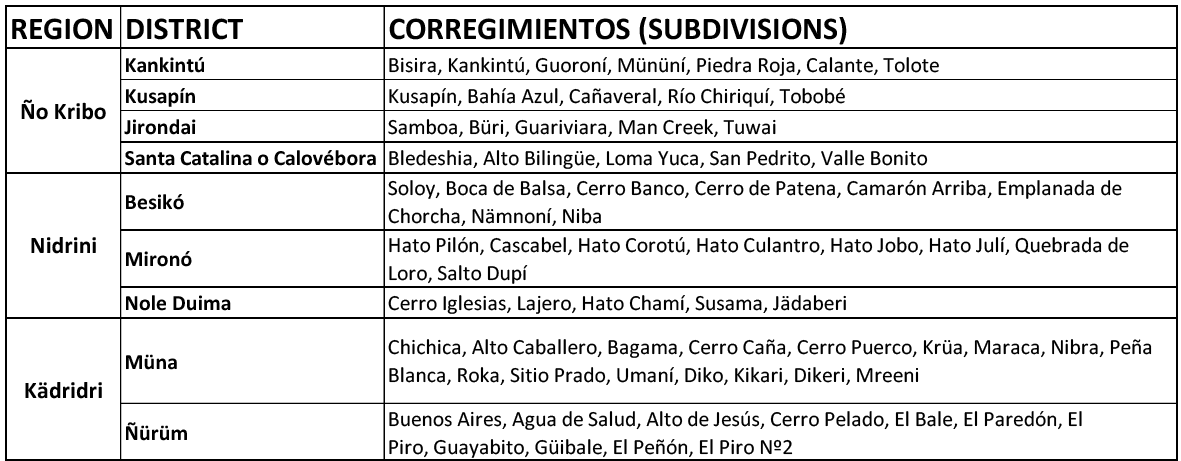
Districts of Ngäbe-Buglé Comarca
Ngäbe-Buglé Comarca
The Ngäbe-Buglé Comarca (pronounced NO-bay BOO-glay) is the largest and most populous of Panama’s six comarcas. It covers an area of approximately 6,500 km2 (2,500 m2) and has a population of 188,000 people. It was created in 1997 from lands formerly belonging to the provinces of Bocas del Toro, Chiriquí, and Veraguas. This comarca has the same standing as a province within Panama.
The Ngöbe-Buglé is comprised of two different, but culturally similar, groups – the Ngöbe and the Buglé. There are some ethno-linguistic differences between the two, but by and large the distinction is small, so they are often referred to in conjunction with one another. The language spoken by the Ngäbe is Ngäbere. The language spoken by the Buglé is Buglere. The two languages are unintelligible between the two.
The Ngöbe-Buglé culture has been largely preserved. This is in part because their communities are scattered in the remote rugged geography of the central mountains. The altitude varies considerably from 100m – 2100m (350’ – 7000’), with only half of the land that is arable.
The Ngöbe-Buglé survive on subsistence agriculture. The men use slash-and-burn techniques to produce corn, rice, bananas, plantains and cassava. During the coffee season, many men travel to plantations near Boquete to help with the harvest and bring back income to their families. The women raise the children and make handicrafts. Two of the most common handicrafts are the naguas (a hand-sewn, traditional dress made of appliqué) and the chacara (a bag woven from plant fibers). These crafts can often be found in markets and shops throughout the Chiriquí province.
The Ngöbe-Buglé Comarca is divided into three regions; Ňö Kribo, Nedrini, and Kadri. Each of these regions is further divided into districts. Refer to Regions and Districts of Ngäbe-Buglé Comarca image showing the map for the geographical divisions. The districts are further divided into corregimientos (townships) or subdivisions as shown in Districts of Ngäbe-Buglé Comarca table.
